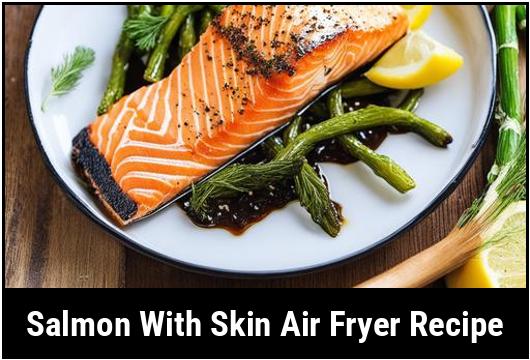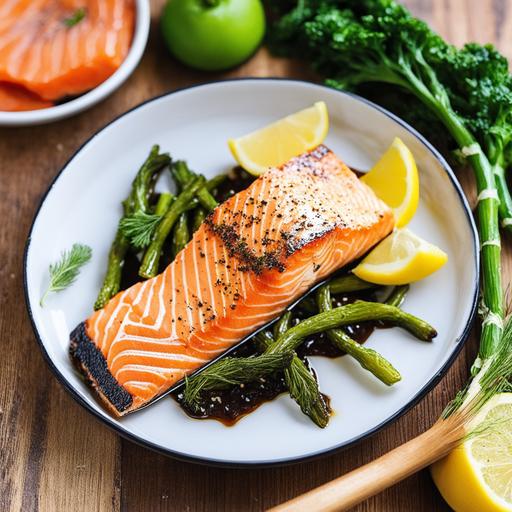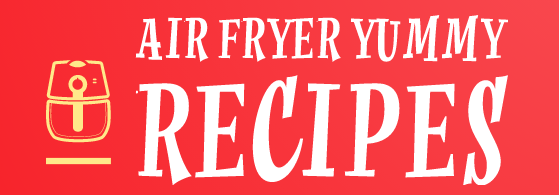The Perfect Salmon With Skin Air Fryer Recipe: A Comprehensive Guide

Are you a seafood lover looking for a healthy and delicious way to cook salmon with its skin intact? Look no further than the air fryer! This innovative appliance provides a quick and efficient method to achieve a crispy and flavorful salmon with the convenience of minimal oil usage. In this comprehensive guide, we will delve into the food science behind air frying, explore the culinary details of cooking salmon, discuss the selection and cleaning process, provide step-by-step preparation instructions, offer useful tips and variations, and even provide a foolproof doneness check method. Get ready to elevate your culinary skills while enjoying a succulent salmon dish!
Understanding the Science of Air Frying
To appreciate the benefits of air frying, it’s crucial to understand the science behind it. Unlike deep-frying, which involves submerging food in a bath of hot oil, air frying utilizes the circulation of hot air to cook ingredients. The air fryer’s high-powered fan and heating element create a rapid and consistent flow of hot air, which surrounds the food and mimics the effect of oil immersion. This process leads to a desirable crispness while keeping the interior moist and tender. By relying on hot air and minimal oil, air frying significantly reduces the overall fat content of the dish, making it a healthier alternative to traditional frying methods.
Selecting the Perfect Salmon
Before diving into the cooking process, it’s important to choose the right salmon for your air fryer recipe. Opt for fresh salmon fillets with the skin intact, as the skin plays a vital role in achieving a crispy exterior. Look for fillets that have a vibrant pink color, a firm texture, and a mild sea scent. Sockeye, King, or Coho salmon are all excellent choices for air frying, as their robust flavors and oil content complement the cooking method perfectly.
Cleaning the Salmon

Cleaning the salmon is an essential step to ensure food safety and enhance the overall taste of the dish. Begin by rinsing the fillets with cold water to remove any residual scales or debris. Pat the fillets dry using paper towels to remove excess moisture, ensuring optimal air fryer performance.
Preparing the Salmon for Air Frying

Now that you have selected and cleaned your salmon fillets, it’s time to prepare them for the air fryer. Follow these steps to guarantee a mouthwatering outcome:
-
Place the fillets on a cutting board, skin-side down, and gently sprinkle them with salt and pepper to bring out the natural flavors.
-
Preheat the air fryer to 400°F (200°C) for a few minutes. This step ensures that the salmon cooks evenly and locks in its moisture.
-
Lightly brush the air fryer basket or tray with a small amount of vegetable oil. This will prevent the skin from sticking and help achieve a delightful crispy texture.
-
Lay the salmon fillets, skin-side down, in a single layer inside the prepared air fryer basket. Allow space between the fillets to enable proper air circulation.
Air Fryer Cooking Time and Temperature

The precise cooking time and temperature are critical to achieving the perfect salmon with skin in an air fryer. Follow these guidelines for unbeatable results:
-
Cook the salmon at 400°F (200°C) for approximately 8-10 minutes, depending on the thickness of the fillets. Thicker cuts may require a couple of additional minutes, while thinner pieces may be done a bit sooner.
-
Check the internal temperature of the salmon using a meat thermometer. The ideal reading should be between 145°F and 150°F (63°C and 65.5°C). This ensures that the salmon is fully cooked while remaining tender and juicy.
Tips for the Perfect Salmon with Skin in an Air Fryer

To elevate your air fryer salmon to the next level, consider implementing these valuable tips:
-
Marination: Prior to cooking, you can marinate the salmon fillets in your favorite mixture of herbs, spices, and lemon juice for an extra burst of flavor.
-
Seasoning Variations: Experiment with different seasoning blends such as dill, garlic, lemon pepper, or smoked paprika to create diverse taste profiles.
-
Adding Crunch: For an additional layer of texture, sprinkle the salmon with breadcrumbs or crushed nuts before air frying.
-
Basting with Sauce: During the cooking process, brush the salmon with a homemade or store-bought glaze, such as teriyaki or maple glaze, to add an irresistible sweet and savory element.
-
Preheating the Air Fryer: To ensure an even cooking process and an optimal crisp exterior, preheat the air fryer for a few minutes before adding the salmon fillets.
-
Flipping with Care: If you prefer a uniformly crispy skin, you can gently flip the fillets halfway through the cooking time. However, exercise caution not to damage the delicate flesh.
Doneness Check: Foolproof Method
If you find checking the internal temperature cumbersome or don’t have a meat thermometer, fear not! There’s a simple visual method to determine if your salmon is perfectly cooked. Follow these steps:
-
Insert a fork or a toothpick into the thickest part of the salmon fillet.
-
Gently twist the fork or toothpick, and if the fish flakes easily and appears opaque, it is done.
-
If the salmon seems translucent and resists flaking, give it a few more minutes in the air fryer and check again.
Presenting the Salmon with Skin
Once your air fryer salmon with skin has reached its optimal doneness, it’s time to present it in an appetizing manner. Consider serving it alongside vibrant roasted vegetables, steamed rice or quinoa, or a refreshing mixed green salad. Garnish the dish with a sprig of fresh herbs, a squeeze of lemon juice, or a drizzle of high-quality olive oil to enhance the overall visual appeal and flavor.
Conclusion
In conclusion, air frying provides a fantastic method for cooking salmon with its skin intact. With the help of an air fryer, you can achieve a crispy exterior while keeping the interior moist and succulent. By following the steps outlined in this comprehensive guide, you’ll be on your way to impressing your family and friends with a delicious and healthy salmon dish. So, dust off your air fryer, select the freshest salmon, and embark on a culinary adventure that combines science, technique, and extraordinary flavor. Happy cooking!
Sources
FAQS On Salmon With Skin Air Fryer Recipe
Can I Use Frozen Salmon For This Air Fryer Recipe?
Yes, you can use frozen salmon, just make sure to thaw it completely before cooking.
Do I Need To Oil The Air Fryer Basket Before Cooking The Salmon?
No, you do not need to oil the basket. The natural oils in the salmon skin will prevent it from sticking.
What Temperature Should I Set The Air Fryer To For This Recipe?
We recommend setting the air fryer to 400 degrees Fahrenheit for perfectly crispy salmon skin.
How Long Does It Take To Cook Salmon In The Air Fryer?
The cooking time will vary depending on the thickness of the salmon fillets, but on average it takes 10-12 minutes.
Is It Necessary To Flip The Salmon Fillets While Cooking In The Air Fryer?
No, you do not need to flip the fillets. The air circulation in the fryer will cook both sides evenly.
Can I Add Any Seasonings Or Marinade To The Salmon Before Cooking?
Absolutely, you can add your favorite seasonings or marinade to the salmon before cooking for added flavor.
What Is The Best Way To Ensure The Salmon Is Cooked To Perfection In The Air Fryer?
We recommend using a meat thermometer to check the internal temperature of the salmon. It should reach at least 145 degrees Fahrenheit for safe consumption.


